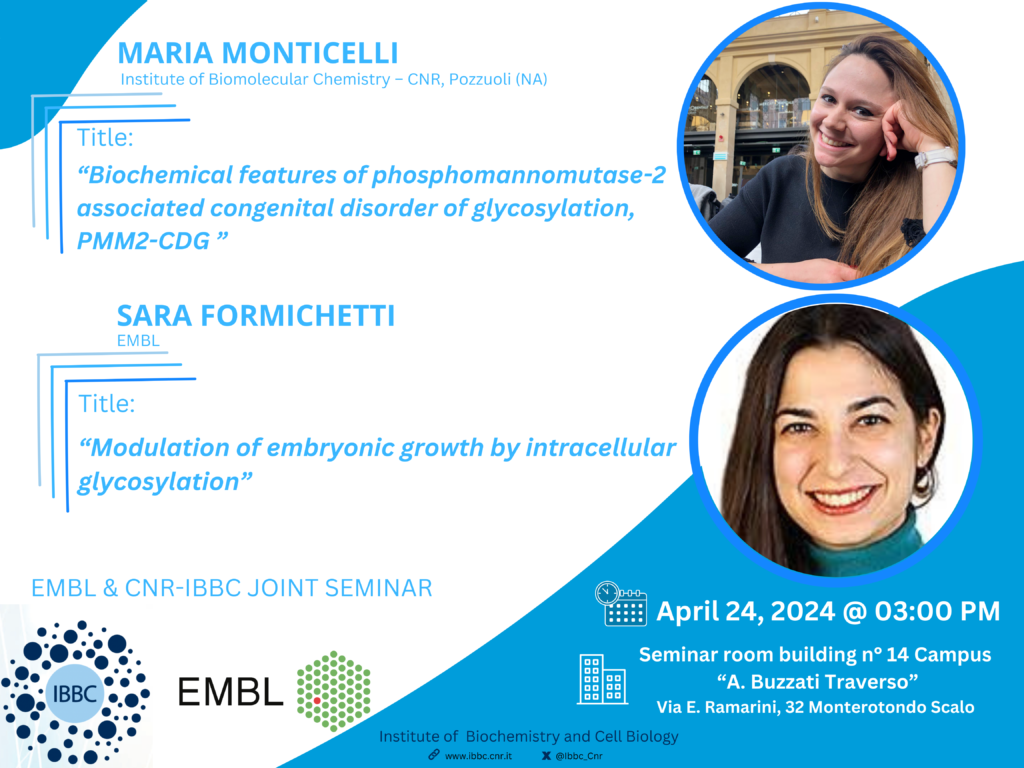joint IBBC - EMBL seminars
24 Apr
15:00
Modulation of embryonic growth by intracellular glycosylation
Monterotondo
Campus “A. Buzzati Traverso” – Via E. Ramarini, 32 Monterotondo Scalo
- Speaker: Sara Formichetti
EMBL
- Title: Modulation of embryonic growth by intracellular glycosylation
- Upcoming EMBL & CNR-IBBC JOINT SEMINAR
Abstract:
The main form of intracellular glycosylation in animals is O-GlcNAcylation, namely the reversible linkage of a monosaccharide (O-GlcNAc) to serine and threonine protein residues. The donor substrate for O-GlcNAc, UDP-GlcNAc, is the end product of a metabolic pathway that is responsive to nutrient levels. O-GlcNAc is present on thousands of mammalian proteins in all cellular compartments, especially the nucleus, and an ever-increasing number of in vitro studies report the regulation by O-GlcNAc of essential cellular functions such as the cell cycle, translation, glycolysis and transcription. In spite of its pleiotropy, only one enzyme is responsible for O-GlcNAcylation, called O-GlcNAc transferase (OGT). In mammals, the Ogt gene is essential for both cellular proliferation and embryonic development. In particular, a functional maternal copy of Ogt is required for the mouse embryo to pass the blastocyst stage. This represents a huge obstacle for genetics studies, with the consequence that the molecular function of O-GlcNAc in early mammalian development remains poorly understood and certainly never addressed in vivo. However, this is a burning question considering the presence of O-GlcNAc on RNA Polymerase II and master regulators of pluripotency such as OCT4. We addressed the role of O-GlcNAc during early mammalian development through two parallel routes both overcoming cellular and embryonic lethality. We depleted the O-GlcNAc modification itself from the embryonic nuclei, by overexpressing in the zygote the enzyme catalyzing O-GlcNAc removal. In parallel, we created an allelic series of four single-amino acid substitutions that reduce the catalytic activity of OGT to a range of degrees. By analyzing the transcriptome of single embryos at key pre- and postimplantation stages upon different level of disruption of O-GlcNAc homeostasis, we discovered that - unexpectedly - nuclear O-GlcNAc is dispensable for embryonic genome activation and blastocyst differentiation, but that the reduction of O-GlcNAc levels slows down embryonic growth. Therefore, we establish a novel link between intracellular protein glycosylation and the pace of developmental progression. In addition, a mild genetic disruption of OGT's activity is sufficient to perturb the silencing of retrotransposons _in vivo_, as previously reported in mESCs.

